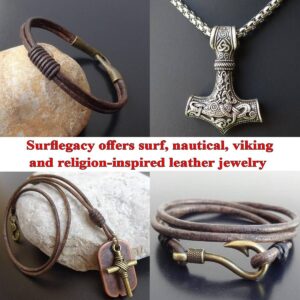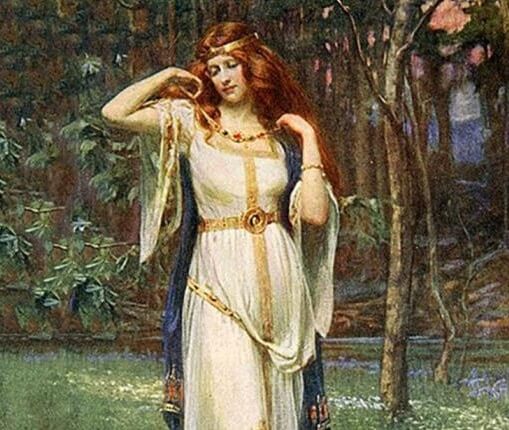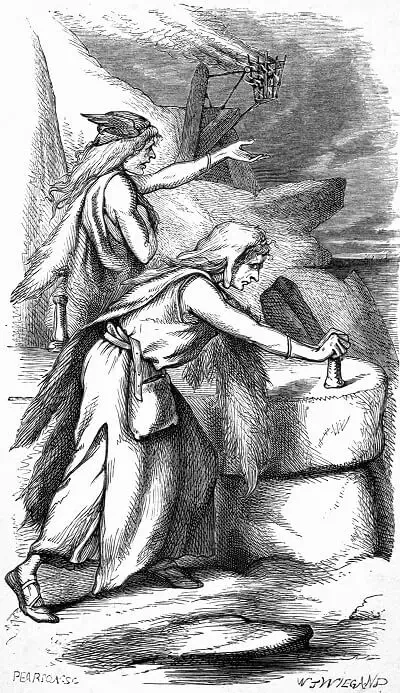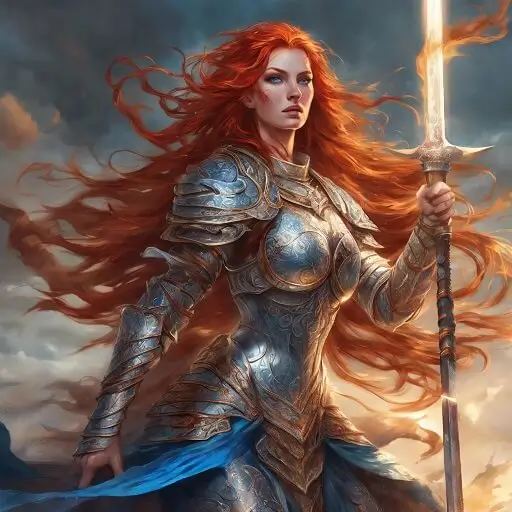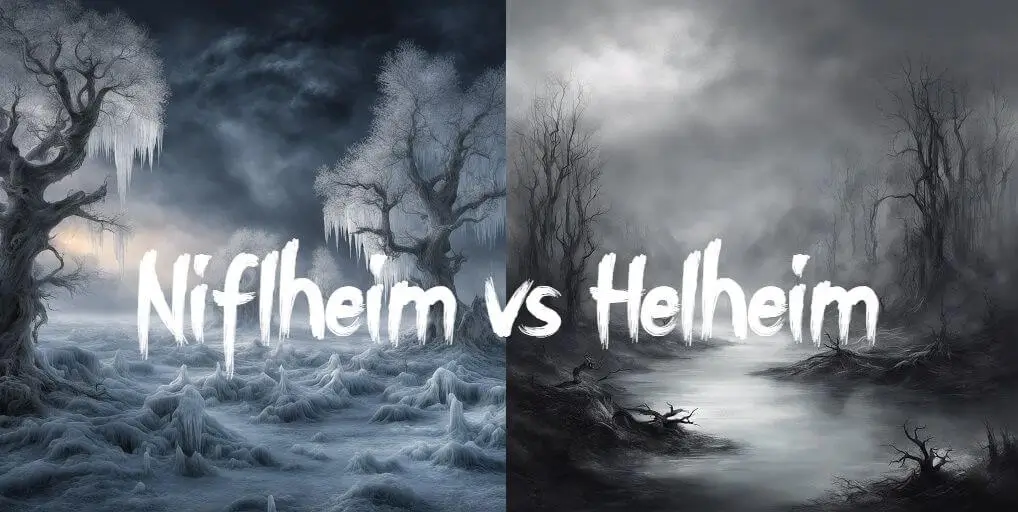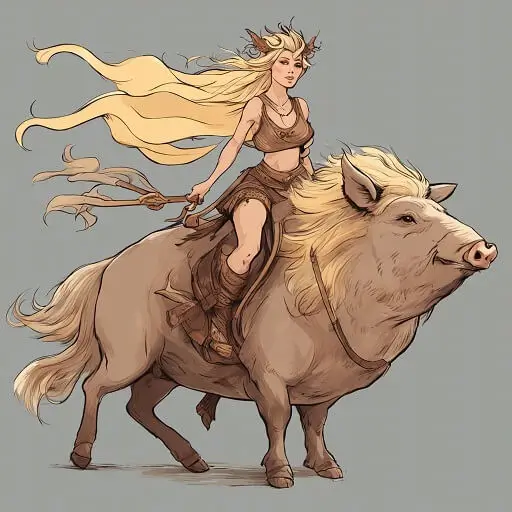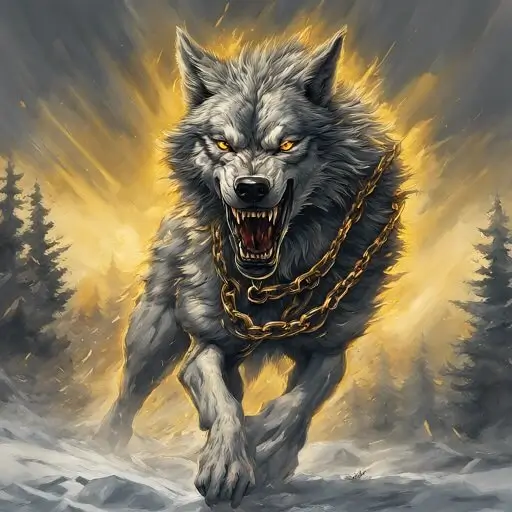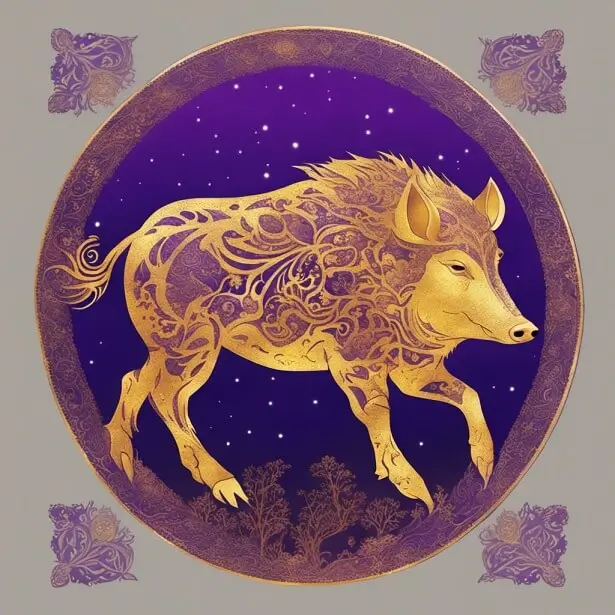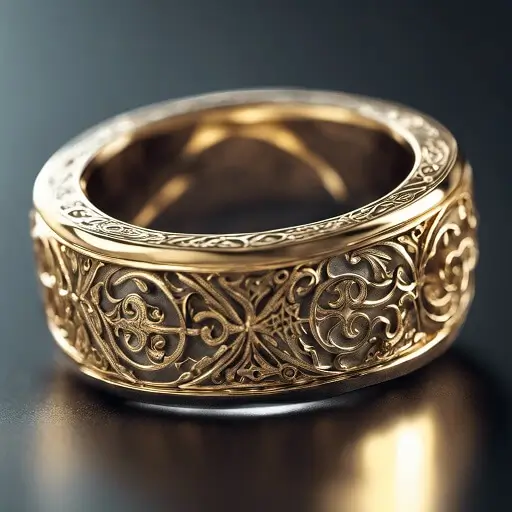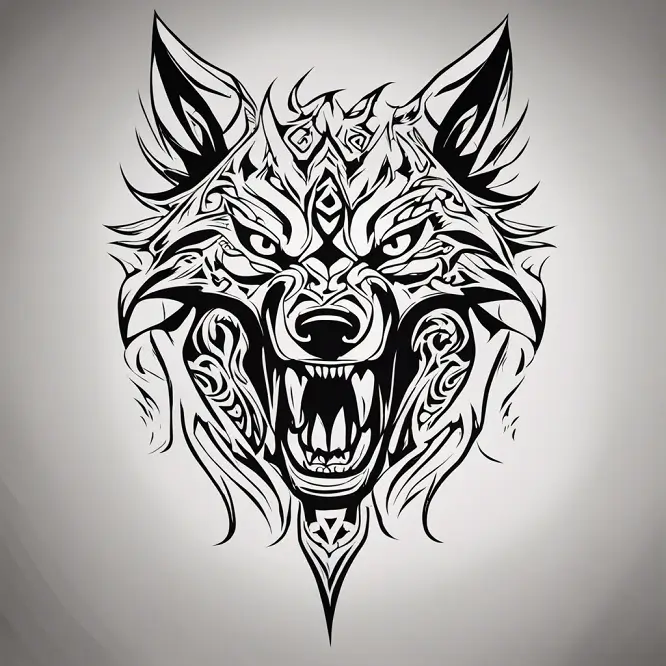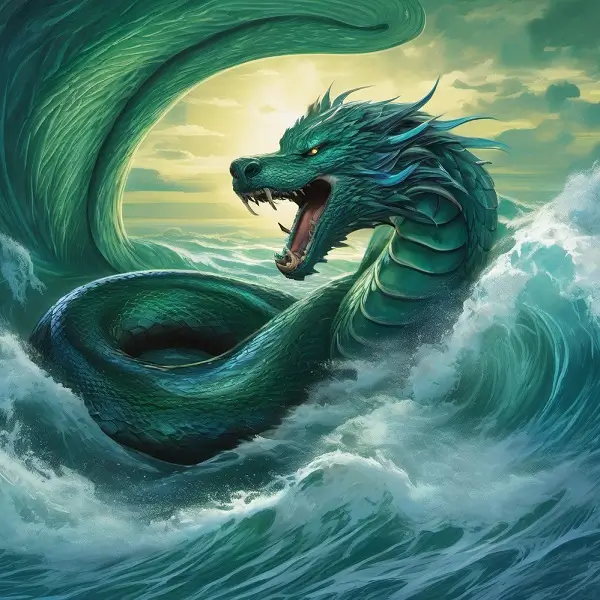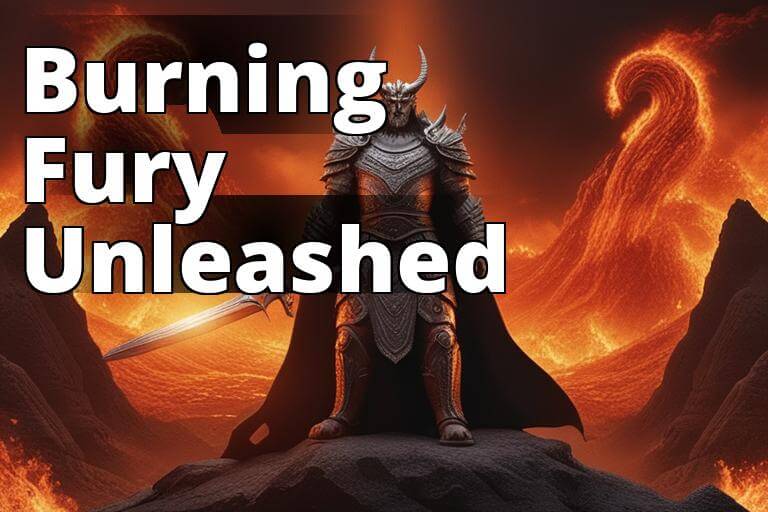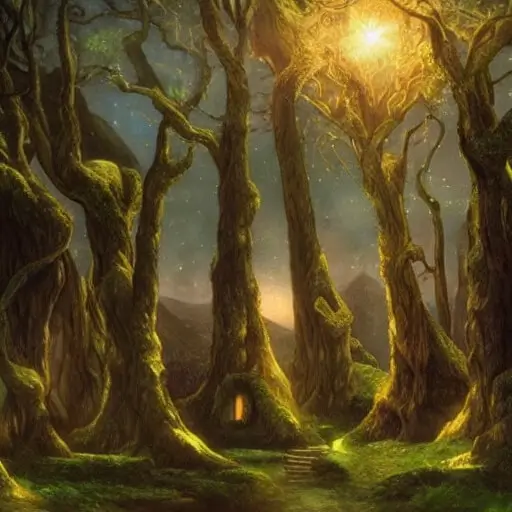Freya in Norse Mythology was the goddess of love, beauty and fertility.
Her name means ‘lady’ in Old Norse. Other names given to Freya are: Freyja, Gefn, Hörn, Mardöll, Sýr, Valfreyja e Vanadís (from which originates the name of the chemical element Vanadium). Daughter of the sea god Njörd and Skaði.
Like her brother (Freyr or Frey) she was the personification of beauty and love and just like Freyr, she was often represented with a wild, sylvan aspect, wearing a dress made of flowers or sometimes of green color, and surrounded by animals.
She was said to have a beautiful aspects and long golden hair. In fact, being children of Njörd (god of the sea) and an unnamed wife.
However, Njord was not an Aesir (a major deity), but another kind of deity: a Vanir. The Vanir, in Norse Mythology, were considered deities of minor importance, sometimes similar to giants, but became allies of the Aesir (inhabitants of Asgard) after a long and exhausting war.
Legend has it that Njörd had given to Odin, father of all the gods, his two children to ensure that the war between Aesir and Vanir ended and that Odin had welcomed them willingly in Asgard thus transforming them into Aesir.
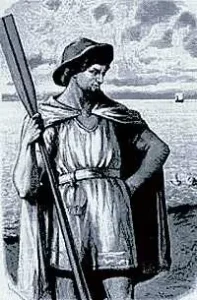
Njord Freya Goddess’ father
Freya and Freyr were often associated with gold, which was also present in the stitching of their clothes and in their tears, and it is very likely that they were twins.
So not only Lady of Gold and Magic, but also Goddess of War and Death. Married and with two sons, Gersemi and Hnoss, to her Odin had entrusted the Fólkvangr, the field that welcomed the heroic warriors killed in battle.
Married to the god Odr she had two daughters Görsimi (in Norse “jewel”) and Hnoss (in Norse “treasure”) they were the personification of wealth and were described as two beautiful young people, sometimes represented with features very similar to the mother.
With whom she lived in the palace of Folkvang where every day they played and sang love songs; but she also owned another palace called Sessrúmnir, where she had the task to receive the souls of the fallen in war.
Freya was in fact a warlike goddess, despite her elegant and refined appearance: she was brave, fierce, very determined, and belonged to the type of valkyrie.
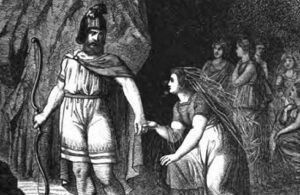
Odr with Freya goddess
Wanted and courted by all, mortals and immortals, giants and dwarves, ordinary people, Freyja ended up always being the center of attention and the other goddesses didn’t like it so much.
Freyja fascinated everyone. Her mere appearance was enough to calm the stormy sea or to make flowers sprout from meadows yellowed by winter; we can imagine what effect her presence had on men and how many of them yearned for her.
In the story of the construction of Valhalla, (the place where the brave warriors who died in battle lived) it is said that an unknown builder came one day before Odin and the gods with a project for the construction of a Divine Dwelling so solid and inaccessible, not to allow anyone to trespass.
In exchange, he asked for the Sun, the Moon and the beautiful Freyja in marriage.
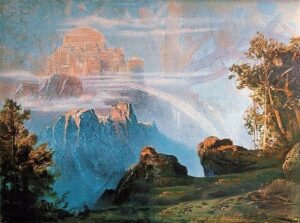
Walhalla by Max Brückner
The Gods accepted, but at the end of the work, during the wedding party, they discovered that the unknown was none other than a Giant Jotunn in disguise, a sworn enemy, of the entire Divine Company.
How the affair ended, we read in another myth that saw the Giant won and killed by Thor. The giant Jotunn was not the only one to resort to deception to obtain the hand of the beautiful Freyja.
Another giant, Jötunn Thrymr, also resorted to a stratagem: he took away the Mjöllnir, Thor’s hammer, to its legitimate owner and as a condition for its return, he asked Freyja to become his wife.
Thor and his brother Loki did not hesitate to accept the proposal and went to the abode of the Goddess to tell her their decision.
The reaction of Freyja, however, was so violent and noisy to shake the walls of his palace and force the two gods to run for their lives.
The tale continues with a rather comical and grotesque twist. At the suggestion of Loki, Thor presents himself to Thrymr in the guise of Freyja; at the sight of the clothes falling off, one after the other revealing the deception, the giant was very surprised, but in the end he delivered the Mjöllnir to its rightful owner.
Her marriage to Óđr was said to be very happy, although he often had to leave home leaving his bride in tears, which were made of gold (in addition to “Sif’s hair”, a way the ancient Nordic peoples called gold was “Freya’s tears”).
Everyone thought he had been killed by the gods for disobeying some of their rules, but Freyja, although crying golden tears for that disappearance, did not give up. Óđr was not dead, but was lost at sea and was exhausted and at the end of his strength and was already turning into a sea serpent.
Freyja managed to save him and take him away with her. But Odr was destined to die and when he died, the reaction of the Goddess, once again was very violent.
She threatened to kill the gods and although Odr had not died in battle, he was allowed to live in Walallha and the Goddess was allowed to visit him and stay with him.
It is not certain, however, to know if Freya was faithful to him, since the other gods – especially Loki – often accused her of being lustful, and it is possible that this corresponded to the truth, both because Freya is described as such in many epic poems and because its wild appearance often indicated that it was not free from some bestial behavior.
Among the many tasks assigned to this deity was to guide the Valkyries with their warriors killed in battle: half of these were destined for Odin and Valhalla, while the other half, were led to Fólkvangr, the “reception camp” of Freyja, who also invited wives and lovers of the warriors and when the “camp” moved through the sky, sparkled like a northern light goddess of Love, Joyful Songs, and garlands.
Freyja was also the goddess of Vegetation and Nature and Fertility and Prophetic and Divinatory Virtues.
In her, paintings and bas-reliefs traditionally depicted holding a garland of flowers and blossoms entwined in her very long blonde hair, they worshipped the goddess of agriculture and flowers.
Many of the myths of which her legend is woven, have a relation with the joys of love, the amorous and even little licentious songs, and the fertility of the earth and many plants bear her name: Freyja’s Hair, Freyja’s Tears, and even many names of cities have originated from her name.
Freya Goddess symbols
There were three main symbolic animals related to this deity: a boar called Hildisvíni, a coat of falcon feathers and cats.
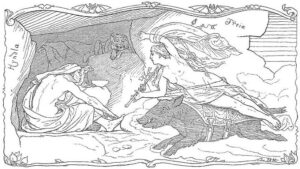
Freya goddess with her boar Hildisvíni
The goddess used to move aboard a chariot pulled by 2 blue cats with which she crossed the sky, sometimes she also rode the boar Hildisvíni.
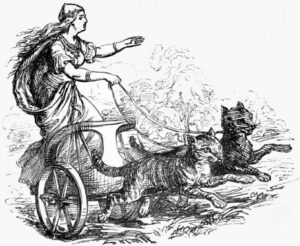
Freya Goddess with the cats pulling the chariot
Freya, as well as her twin brother, were also associated with the falcon. The goddess, in fact, possessed a coat of falcon feathers, which allowed her to magically transform into a falcon and she generously lent it to other gods in situations of need.
She lent it to Thor, in fact, when they stole the hammer and did the same to Loki when he went in search of the goddess Idunn. Other symbols of Freya were the raven, one of the symbols of the Valkyries and the rose.
The Brísingamen Necklace.
The most famous symbol attributed to this goddess was the Brísingamen necklace. The story of this necklace would deserve a separate story, made of gold, amber and rubies, possessed the virtue of making the beauty of the goddess irresistible.
Legend has it that one night while Freya was wandering through the land of the dwarfs she spotted 4 of them while they were making the most beautiful golden necklace.
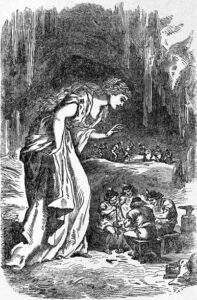
Freya Goddess in the dwarfs’ cave
The dwarfs Alfrigg, Berling, Grerr and Dvalin had made a necklace that was not only beautiful, but also magical. It was the most beautiful necklace Freyja had ever seen and she wanted it more than anything else.
So she decided to offer the dwarves silver and gold in exchange for the necklace, but the dwarves refused, letting her know that she could only have the necklace if she spent one night with each of them.
Not being able to convince them in any other way, the Goddess did not resist and accepted their proposal and the next day she returned to her palace with the necklace around her neck and without telling anyone where it came from.
This is, according to the legend, the only time Freya submitted to the desires of others, as a warrior spirit, rebellious and indomitable, it was actually impossible to bend her to her own will.
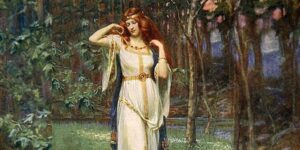
Freya Goddess and the The Brísingamen necklace by James Doyle Penrose, 1890
Loki the deceiver, however, had seen everything and rushed to warn Odin who, informed about Freya’s behavior and her promiscuity, ordered him to steal the necklace.
Freyja’s house was inviolable, but Loki turned into a fly and managed to penetrate inside and take away her precious necklace.
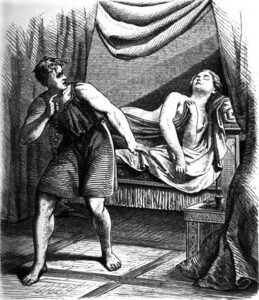
Loki stealing Freya goddess’ necklace
The Goddess immediately ran to Odin to complain about the theft and Odin promised her that she would have her necklace back only on one condition: to create with her magic the two kingdoms of Høgni and Heđinn.
So far nothing exceptional, if not for the fact that on the two kingdoms had to weigh a curse: they had to fight for eternity, dying and being born again, until a Christian warrior arrived to save them from the curse.
That warrior was Olaf Tryggvason, the future first King of Norway.
Freya and Frigg
It is not certain whether the day of Friday (in German “Freitag” and in English “Friday”) could be dedicated to this goddess and her brother Freyr or to the goddess Frigg, Odin’s bride.
With the goddess Frigg, however, Freya had an infinite number of characteristics in common: for example the ability to provide husbands to young girls (or even just new loves) and to be the protector of brides and marriage.
She was also a very powerful goddess, endowed with almost the same powers of Odin, Frigg’s husband, whose name recalls that of “Odr”, sometimes called “Od”, that is the husband of Freya.
In some versions of the legend, Frigg does not exist and the bride of Odin is precisely Freya.
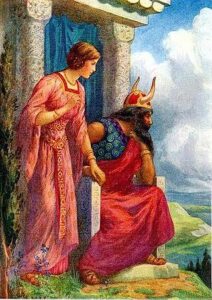
Odin and Frigg
Not only, but these two goddesses had both the gift of divination, and one of the animal’s symbols of Freya was the cat – a representation of femininity but also of sexuality – one of the same symbols of Frigg.
Both had the power to travel in the sky on a cart pulled by two cats, but sometimes the goddess Freya was instead represented on a cart pulled by the boar Gullinbursti, one of the symbols of Freyr, forged with golden bristles by the dwarfs Eitri and Brokkr.
Nordic Mythology sometimes indicates this boar with the other name of Hildisvíni in Norse language, but it is not clear whether it is the same animal or another, identical to that of Freyr.
The analogies with Frigg do not end here: it is thought that the same name “Freya” literally “lady”, may derive from that of “Frigg”, which is uncertain whether it means “bride, wife” or “beloved, beloved”; but it is possible that it also means “lady” because the queen of the Aesir was called “lady of the gods” or “lady of the sky”.
Both were also two warrior goddesses (Valkyries) in charge of collecting the souls of those fallen in battle and bringing them to Valhalla, the paradise of the Aesir.
Odin was entitled to half of the souls collected, while the other half, according to the various versions, was or Frigg or Freya, another fact in common between the two.
Freya, moreover, was sometimes depicted wearing a cloak of hawk feathers that gave her the power to fly in the sky, just as it is said that Frigg and his handmaiden Hlin possessed.
Odr often went away from home leaving his wife alone and this fact can lead to suspect that Freya is just Frigg, the wife of Odin, who was called “the god wayfarer” because he always traveled around the world to pass on his knowledge to mortals.
For all these reasons, the two gods were often confused or considered a derivation of each other.
In some poems, they are not even distinguished, and it is thought that their stories may have been written in parallel, that is, they are the same story told first from the point of view of the Aesir and then from the point of view of the Vanir.
Final Thoughts
The legends that revolve around the goddess Freya are countless, and it is difficult to report them all in a short space. What can be said about this fantastic character is that she is a woman with a strong and indomitable character.
The goddess has the strength of will of a commander, strong self-esteem, and a sense of her own identity that allows her to support and strengthen her will.
Quick-minded and intelligent, the Freya goddess possesses a high degree of stubbornness and confidence that leads her to ignore the suggestions of others.
This deity is willing to fight to the death and destroy anyone who threatened her home and family. All this makes her very ruthless towards the enemy and anyone she sees as a threat.
Dynamic, impulsive, highly extroverted. Passionate whenever she has to immolate herself for a just cause, tends to be aggressive.
Always in action and present on the battlefield, she needs constant challenges to throw herself into, she gets bored easily, is not very centered and balanced, impatient but at the same time very brave.
Definitely, a goddess who represents an unconventional woman.
Shop Viking Jewelry
Are passionate about Vikings or Norse Mythology? Finding the ideal piece of Norse Jewelry can be challenging and time-consuming, especially if you lack inspiration or don’t know where to look.
Surflegacy, has you covered. We have a wide range of Viking Jewelry in various styles, shapes, colors, and materials, to accentuate your Viking spirit and look.